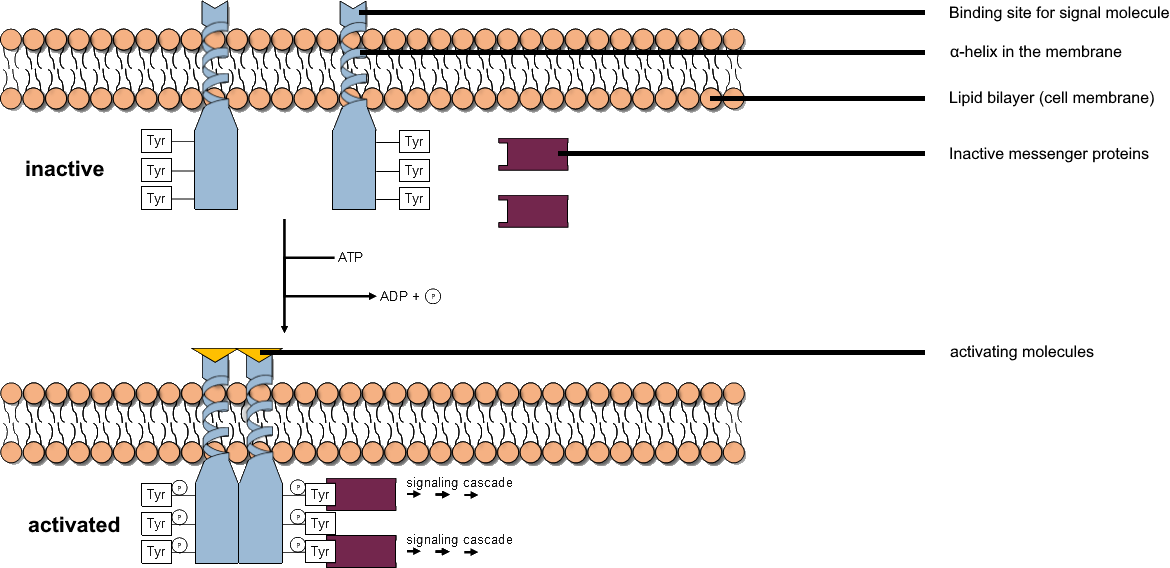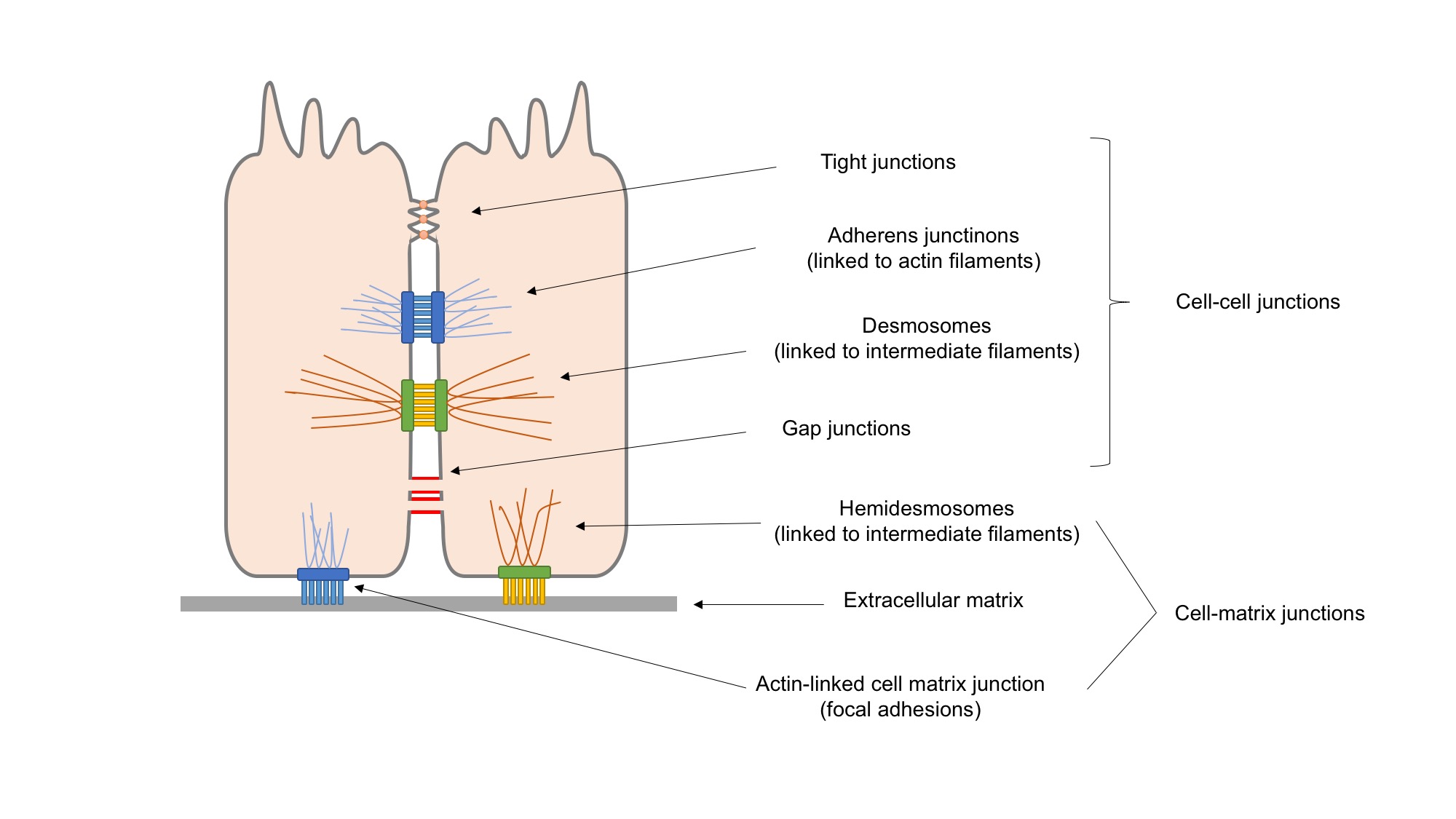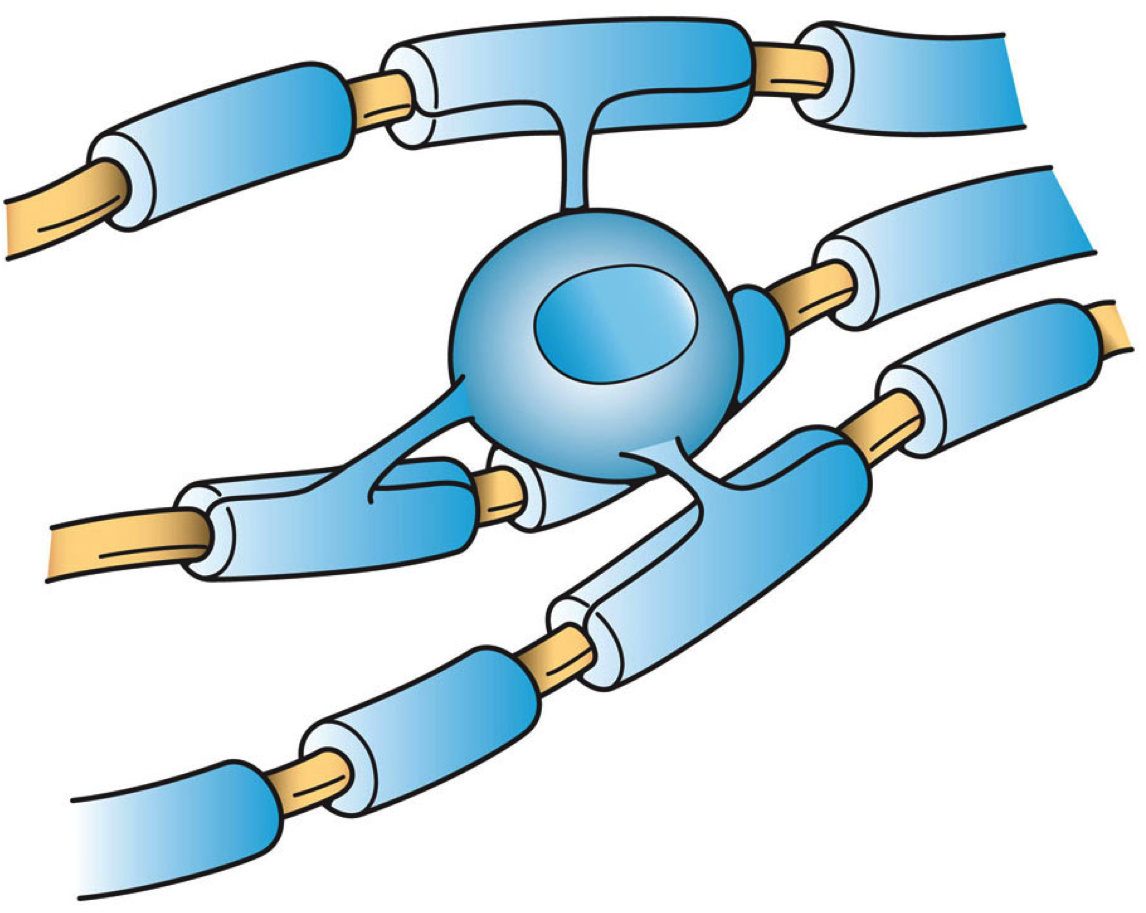|
FYN
Proto-oncogene tyrosine-protein kinase Fyn (p59-FYN, Slk, Syn, MGC45350, Gene ID 2534) is an enzyme that in humans is encoded by the ''FYN'' gene. Fyn is a 59-kDa member of the Src family of kinases typically associated with T-cell and neuronal signaling in development and normal cell physiology. Disruptions in these signaling pathways often have implications in the formation of a variety of cancers. By definition as a proto-oncogene, Fyn codes for proteins that help regulate cell growth. Changes in its DNA sequence transform it into an oncogene that leads to the formation of a different protein with implications for normal cell regulation. Fyn is a member of the protein-tyrosine kinase oncogene family. It encodes a membrane-associated tyrosine kinase that has been implicated in the control of cell growth. The protein associates with the p85 subunit of phosphatidylinositol 3-kinase and interacts with the fyn-binding protein. Alternatively spliced transcript variants encoding ... [...More Info...] [...Related Items...] OR: [Wikipedia] [Google] [Baidu] |
C-Raf
RAF proto-oncogene serine/threonine-protein kinase, also known as proto-oncogene c-RAF or simply c-Raf or even Raf-1, is an enzyme that in humans is genetic code, encoded by the ''RAF1'' gene. The c-Raf protein is part of the MAPK/ERK pathway, ERK1/2 pathway as a MAP kinase (MAP3K) that functions downstream of the Ras subfamily of membrane associated GTPases. C-Raf is a member of the Raf kinase family of serine/threonine-specific protein kinases, from the TKL (Tyrosine-kinase-like) group of kinases. Discovery The first Raf gene, v-Raf was found in 1983. It was isolated from the murine retrovirus bearing the number 3611. It was soon demonstrated to be capable to transform rodent fibroblasts to cancerous Immortalised cell line, cell lines, so this gene was given the name Virus-induced Rapidly Accelerated Fibrosarcoma (V-RAF). A year later, another transforming gene was found in the avian retrovirus MH2, named v-Mil - that turned out to be highly similar to v-Raf. Researchers were ... [...More Info...] [...Related Items...] OR: [Wikipedia] [Google] [Baidu] |
Src (gene)
Proto-oncogene tyrosine-protein kinase Src, also known as proto-oncogene c-Src, or simply c-Src (cellular Src; pronounced "sarc", as it is short for sarcoma), is a non-receptor tyrosine kinase protein that in humans is encoded by the ''SRC'' gene. It belongs to a family of Src family kinases and is similar to the v-Src (viral Src) gene of Rous sarcoma virus. It includes an SH2 domain, an SH3 domain and a tyrosine kinase domain. Two transcript variants encoding the same protein have been found for this gene. c-Src phosphorylates specific tyrosine residues in other tyrosine kinases. It plays a role in the regulation of embryonic development and cell growth. An elevated level of activity of c-Src is suggested to be linked to cancer progression by promoting other signals. Mutations in c-Src could be involved in the malignant progression of colon cancer. c-Src should not be confused with Tyrosine-protein kinase CSK, CSK (C-terminal Src kinase), an enzyme that phosphorylates c-Src at it ... [...More Info...] [...Related Items...] OR: [Wikipedia] [Google] [Baidu] |
Src Family Kinase
Src kinase family is a family of non-receptor tyrosine kinases that includes nine members: Src (gene), Src, YES1, Yes, FYN, Fyn, and FGR (gene), Fgr, forming the SrcA subfamily, Lck, HCK, Hck, Tyrosine-protein kinase BLK, Blk, and Lyn (Src family Kinase), Lyn in the SrcB subfamily, and FRK (gene), Frk in its own subfamily. Frk has homologs in invertebrates such as flies and worms, and Src homologs exist in organisms as diverse as unicellular choanoflagellates, but the SrcA and SrcB subfamilies are specific to vertebrates. Src family kinases contain six conserved domains: a N-terminal Myristoylation, myristoylated segment, a SH2 domain, a SH3 domain, a linker region, a tyrosine kinase domain, and C-terminal tail. Src family kinases interact with many cellular cytosolic, nuclear and membrane proteins, modifying these proteins by phosphorylation of tyrosine residues. A number of substrates have been discovered for these enzymes. Deregulation, including constitutive activation or ... [...More Info...] [...Related Items...] OR: [Wikipedia] [Google] [Baidu] |
Tyrosine Kinase
A tyrosine kinase is an enzyme that can transfer a phosphate group from ATP to the tyrosine residues of specific proteins inside a cell. It functions as an "on" or "off" switch in many cellular functions. Tyrosine kinases belong to a larger class of enzymes known as protein kinases which also attach phosphates to other amino acids such as serine and threonine. Phosphorylation of proteins by kinases is an important mechanism for communicating signals within a cell (signal transduction) and regulating cellular activity, such as cell division. Protein kinases can become mutated, stuck in the "on" position, and cause unregulated growth of the cell, which is a necessary step for the development of cancer. Therefore, kinase inhibitors, such as imatinib and osimertinib, are often effective cancer treatments. Most tyrosine kinases have an associated protein tyrosine phosphatase, which removes the phosphate group. Reaction Protein kinases are a group of enzymes that possess a ca ... [...More Info...] [...Related Items...] OR: [Wikipedia] [Google] [Baidu] |
ADD2
Beta-adducin is a protein that in humans is encoded by the ''ADD2'' gene. Function Adducins are heteromeric proteins composed of different subunits referred to as adducin alpha, beta, and gamma. The three subunits are encoded by distinct genes and belong to a family of membrane skeletal proteins involved in the assembly of spectrin-actin network in erythrocytes and at sites of cell-cell contact in epithelial tissues. While adducins alpha and gamma are ubiquitously expressed, the expression of adducin beta is restricted to brain and hematopoietic tissues. Adducin, originally purified from human erythrocytes, was found to be a heterodimer of adducins alpha and beta. Polymorphisms resulting in amino acid substitutions in these two subunits have been associated with the regulation of blood pressure in an animal model of hypertension. Heterodimers consisting of alpha and gamma subunits have also been described. Structurally, each subunit is composed of two distinct domains. T ... [...More Info...] [...Related Items...] OR: [Wikipedia] [Google] [Baidu] |
PP2 (kinase Inhibitor)
PP2 is a substance that has frequently been used in cancer research as a "selective" inhibitor for Src-family kinases. It strongly inhibits the kinases Lck ( IC50=4 nM), Fyn (5 nM) and Hck (5 nM), shows weaker inhibition of epidermal growth factor receptor (480 nM) and practically no inhibition of ZAP-70 (100 μM) and JAK2 Janus kinase 2 (commonly called JAK2) is a non-receptor tyrosine kinase. It is a member of the Janus kinase family and has been implicated in signaling by members of the type II cytokine receptor family (e.g. interferon receptors), the GM-CSF ... (50 μM). Despite its extensive use as a Src-selective inhibitor, recent research has shown that PP2 is non-selective and inhibits many other kinases with similar affinities. Structure PP2A is a heterotrimeric enzyme composed of three types of subunits: * Catalytic subunit (C subunit): performs the dephosphorylation. * Scaffold subunit (A subunit): acts as a structural platform. ... [...More Info...] [...Related Items...] OR: [Wikipedia] [Google] [Baidu] |
Platelet-activating Factor
Platelet-activating factor, also known as PAF, PAF-acether or AGEPC (acetyl-glyceryl-ether-phosphorylcholine), is a potent phospholipid activator and mediator of many leukocyte functions, platelet aggregation and degranulation, inflammation, and anaphylaxis. It is also involved in changes to vascular permeability, the oxidative burst, chemotaxis of leukocytes, as well as augmentation of arachidonic acid metabolism in phagocytes. PAF is produced by a variety of cells, but especially those involved in host defense, such as platelets, endothelial cells, neutrophils, monocytes, and macrophages. PAF is continuously produced by these cells but in low quantities and production is controlled by the activity of PAF acetylhydrolases. It is produced in larger quantities by inflammatory cells in response to specific stimuli. History PAF was discovered by French immunologist Jacques Benveniste in the early 1970s. PAF was the first phospholipid known to have messenger functions. Benvenist ... [...More Info...] [...Related Items...] OR: [Wikipedia] [Google] [Baidu] |
Ion Channel
Ion channels are pore-forming membrane proteins that allow ions to pass through the channel pore. Their functions include establishing a resting membrane potential, shaping action potentials and other electrical signals by Gating (electrophysiology), gating the flow of ions across the cell membrane, controlling the flow of ions across secretion, secretory and epithelial cells, and regulating cell (biology), cell volume. Ion channels are present in the membranes of all cells. Ion channels are one of the two classes of ionophore, ionophoric proteins, the other being ion transporters. The study of ion channels often involves biophysics, electrophysiology, and pharmacology, while using techniques including voltage clamp, patch clamp, immunohistochemistry, X-ray crystallography, fluoroscopy, and RT-PCR. Their classification as molecules is referred to as channelomics. Basic features There are two distinctive features of ion channels that differentiate them from other types of ion ... [...More Info...] [...Related Items...] OR: [Wikipedia] [Google] [Baidu] |
Cell Adhesion
Cell adhesion is the process by which cells interact and attach to neighbouring cells through specialised molecules of the cell surface. This process can occur either through direct contact between cell surfaces such as Cell_junction, cell junctions or indirect interaction, where cells attach to surrounding extracellular matrix (ECM), a gel-like structure containing molecules released by cells into spaces between them. Cells adhesion occurs from the interactions between cell adhesion molecules, cell-adhesion molecules (CAMs), transmembrane proteins located on the cell surface. Cell adhesion links cells in different ways and can be involved in signal transduction for cells to detect and respond to changes in the surroundings. Other cellular processes regulated by cell adhesion include cell migration and tissue development in multicellular organisms. Alterations in cell adhesion can disrupt important cellular processes and lead to a variety of diseases, including cancer and arthrit ... [...More Info...] [...Related Items...] OR: [Wikipedia] [Google] [Baidu] |
Oligodendrocyte
Oligodendrocytes (), also known as oligodendroglia, are a type of neuroglia whose main function is to provide the myelin sheath to neuronal axons in the central nervous system (CNS). Myelination gives metabolic support to, and insulates the axons of most vertebrates. A single oligodendrocyte can extend its Cellular extensions, processes to cover up to 40 axons, that can include multiple adjacent axons. The myelin sheath is segmented along the axon's length at gaps known as the nodes of Ranvier. In the peripheral nervous system the myelination of axons is carried out by Schwann cells. Oligodendrocytes are found exclusively in the CNS, which comprises the brain and spinal cord. They are the most widespread cell lineage, including oligodendrocyte progenitor cells, pre-myelinating cells, and mature myelinating oligodendrocytes in the CNS white matter. Non-myelinating oligodendrocytes are found in the grey matter surrounding and lying next to neuronal cell bodies. They are known as neu ... [...More Info...] [...Related Items...] OR: [Wikipedia] [Google] [Baidu] |
Axon Guidance
Axon guidance (also called axon pathfinding) is a subfield of neural development concerning the process by which neurons send out axons to reach their correct targets. Axons often follow very precise paths in the nervous system, and how they manage to find their way so accurately is an area of ongoing research. Axon growth takes place from a region called the growth cone and reaching the axon target is accomplished with relatively few guidance molecules. Growth cone receptors respond to the guidance cues. Mechanisms Growing axons have a highly motile structure at the growing tip called the growth cone, which responds to signals in the extracellular environment that instruct the axon in which direction to grow. These signals, called guidance cues, can be fixed in place or diffusible; they can attract or repel axons. Growth cones contain receptors that recognize these guidance cues and interpret the signal into a chemotropic response. The general theoretical framework is that wh ... [...More Info...] [...Related Items...] OR: [Wikipedia] [Google] [Baidu] |
Mitosis
Mitosis () is a part of the cell cycle in eukaryote, eukaryotic cells in which replicated chromosomes are separated into two new Cell nucleus, nuclei. Cell division by mitosis is an equational division which gives rise to genetically identical cells in which the total number of chromosomes is maintained. Mitosis is preceded by the S phase of interphase (during which DNA replication occurs) and is followed by telophase and cytokinesis, which divide the cytoplasm, organelles, and cell membrane of one cell into two new cell (biology), cells containing roughly equal shares of these cellular components. The different stages of mitosis altogether define the mitotic phase (M phase) of a cell cycle—the cell division, division of the mother cell into two daughter cells genetically identical to each other. The process of mitosis is divided into stages corresponding to the completion of one set of activities and the start of the next. These stages are preprophase (specific to plant ce ... [...More Info...] [...Related Items...] OR: [Wikipedia] [Google] [Baidu] |





